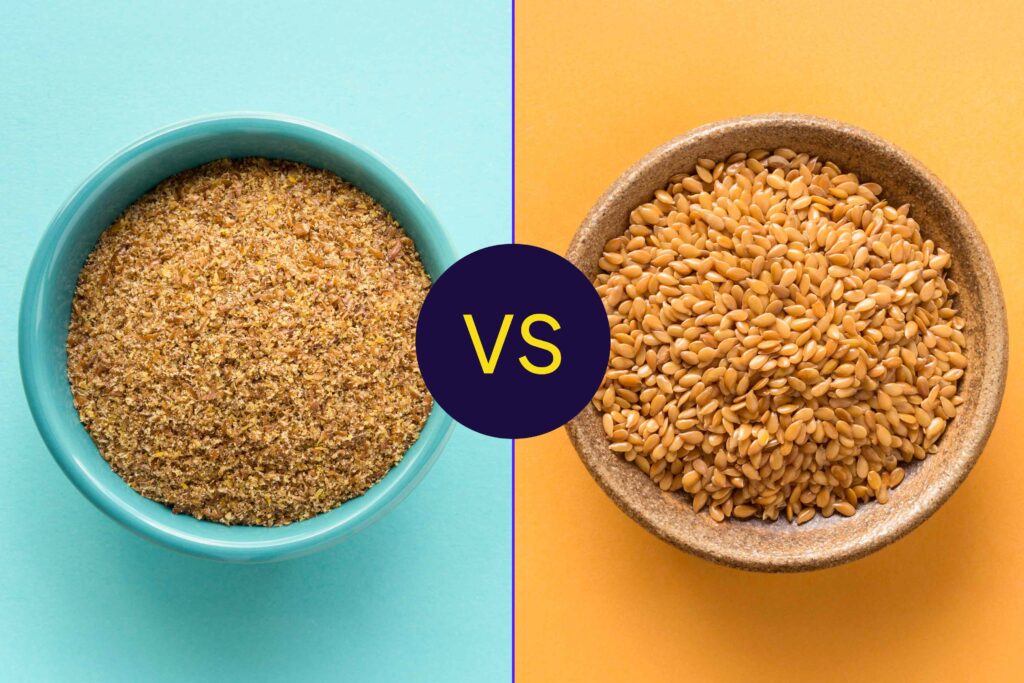A tiny seed with big benefits, flaxseed may boost your well-being in all sorts of ways—from better digestion to a healthier heart.
But should you eat the seeds ground or whole? That choice actually makes a big difference in what your body can absorb—here’s what you need to know.
Whole flaxseeds still have their tough outer shell, which can increase the seeds’ nutrients but also make them less accessible to the body.
That shell is a good source of fiber—nearly double the amount found in ground flaxseeds—and can help alleviate constipation and reduce weight, blood sugar, and cholesterol levels. Research has also shown that the extra fiber in whole flaxseeds (a combination of soluble and insoluble fiber) makes them the most effective form for improving blood sugar.
But some people may not digest whole flaxseeds well—this is when grinding the seeds into a powder or a meal may be helpful.
While ground flaxseed may be easier on your digestive system, it could also give you better access to the seeds’ nutrients.
Lignans, a class of antioxidants that have anti-inflammatory benefits, are one of those nutrients. “When the seeds are crushed, the intestinal microbiota are able to better convert the lignans into other compounds (namely enterolignans) that have benefits,” said Sharon Palmer, MSFS, RDN, of The Plant-Powered Dietitian.
Grinding flaxseeds also allows the body to soak up more alpha-linoleic acid (ALA), a plant-based omega-3 fatty acid that supports heart health. A 2008 study found that milled flaxseed delivered significant levels of ALA to the bloodstream; whole flaxseeds did not.
A downside of ground flaxseed? It has a shorter shelf life—but you can get around that by grinding seeds right before use, or storing it in the freezer for longer preservation.
| Whole vs. Ground Flaxseed Nutrition | ||
|---|---|---|
| Whole Flaxseed | Ground Flaxseed | |
| Calories | 150 | 70 |
| Protein | 6 g | 3 g |
| Total fat | 10 g | 6 g |
| Carbohydrates | 8 g | 4 g |
| Fiber | 6 g | 4 g |
The consensus here is that ground flaxseed is the way to go.
Whole flaxseeds are a good choice for their high fiber content, but grinding flax unlocks the seeds’ omega-3s and lignans, making it the better choice for overall nutrient absorption.
But you don’t have to cut out whole flaxseeds completely. “I would emphasize ground flax in my diet but also include whole flax periodically,” said Amanda Sauceda, MS, RD, creator of The Mindful Gut and lecturer at California State University, Long Beach. “To get the best of both worlds, buy whole flax (because it can keep longer) and then grind what you need for fresh-ground flax.”
You can also use whole seeds like you would nuts—add them to homemade granola, sprinkle some on cereal, or bake them into muffins or breads. Ground flax is even more versatile: Try stirring a spoonful into a smoothie, atop oatmeal, or using it as a binder in veggie burgers.


